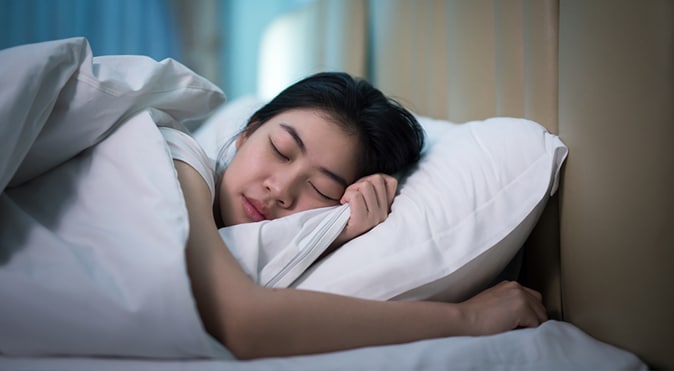
A form of the “pillow” has existed for thousands of years – beginning with stone pillows used for sleeping in Mesopotamia around 7000 BC. However, these ancient pillows, which could not have been comfortable, served a different purpose than the beloved pillows of today. Back then, stone “pillows” helped users avoid insects crawling into their mouths, noses, and ears during sleep – if even possible with a literal “hard as a rock” pillow, right?
Fast forward to today, where pillows provide comfort and support while sleeping – and represent a multi-billion dollar industry. In fact, pillows have evolved so much over the years that many types are available, including pillows designed for sleep positions or to address sleeping issues, such as sleeping hot or snoring.
So, although “pillow talk” is pretty common in bed – actually talking about pillows isn’t, and the subject deserves attention – especially when it comes to pillow life cycles. So, keep reading for everything you need to know about pillow longevity, upkeep, types, washing, and more.
Why replace your pillow?
You’ve probably heard plenty of advice on when a mattress should be replaced or how often you should wash your bedding. However, pillows are one of the unsung heroes of sleep, and they need as much TLC as the rest of your bedding – including periodic replacement.
But wait – why do we need to replace pillows at all? Well, there’s actually more than one reason, but we’ll begin with the big one – sleep quality. An old pillow, or even the wrong pillow, can impact how well and how long you sleep at night, and a tired, worn-out pillow no longer provides the appropriate support to your head and neck, which can impact your sleep quality.
Sleep Tip: the correct sleeping position mimics standing with good posture and keeping the head, neck, and spine aligned.
However, there’s the “ick” factor. Basically, pillows are very busy absorbing things all the time. What kinds of things? Well, skin oils, dead skin cells, facial and hair product residue, fungi, dust mites, and more “ick” than you can imagine. So, your favorite pillow that is over 5 or 10 years old probably weighs more than it did when you bought it, thanks to all the lovely leftovers living in the stuffing after years of use.
How long should you keep a pillow?
So, given that over time, pillows can wear down, affecting comfort, and absorb lots of “things” – let’s talk about when to replace pillows. Now that you understand why it’s necessary, how often should it happen?
Our research indicates we should reset with a new pillow every 2.8 years. Pillows can get old and flat – and basically cease to provide the comfort and support we need. They can also become dirty (with all the “ick” – dust, oils, allergens, etc.). So, visual signs it’s time to replace your pillow can include sagging, lumpiness, or yellowing on the pillow itself.
Pillow types & washing.
Now that we’ve opened your eyes to what your pillow may be absorbing every night while you sleep, you may want to add cleaning your pillow regularly to your chore list. Pillow maintenance and cleaning will depend on the type of pillow, i.e., down/feather, memory foam, etc. Here’s a quick tutorial for each main type.
Quick side note – our cleaning recommendations should not replace manufacturer’s instructions, so always check the care instructions provided with the product.
Feather or Down Pillows –
- Some down/feather pillows can be machine washed, but some should be dry cleaned.
- Machine wash on a gentle cycle with warm water and mild detergent.
- You may have to run the rinse cycle more than once to remove all the detergent.
- Air-dry or use the dryer on a low setting for about 20 minutes
- Wash them every 3 to 6 months until you replace the pillow.
Memory Foam Pillows –
- Memory foam pillows are not washing machine or dryer friendly.
- Spot clean when necessary.
- Or hand wash every 2 months with a gentle detergent and water.
- Air-dry.
Polyester/Down Alternative Pillows –
- Machine wash on a gentle cycle with mild detergent and cold water.
- Dry in the dryer on a low setting.
- Wash every 3 to 6 months.
- Down alternative pillows tend to last approximately 1 to 2 years & polyester pillows can be replaced every 6 months to 2 years, as they are the least durable.
Latex Pillows –
- Not washing machine friendly.
- Spot clean stains as necessary or hand wash with warm water and mild detergent.
- Clean every 2 to 3 months.
- Don’t submerge in water or wring to dry. Instead, lay the pillow flat to air out.
Pillow shopping tips.
Now that we’ve unraveled the mystery of a pillow’s life expectancy, are you ready to shop for replacement pillows? If so, here are some shopping tips to help you select a dream-worthy option.
- Try before you buy – look at various fills, styles, and shapes. If you’re buying online, check the return policy so you can physically try it out before buying.
- Pay attention to a pillow’s inner fill, but also note its outer material. These outer layers range in plushness and thickness.
- If you have allergies or asthma, consider hypoallergenic options over a normal pillow.
- Once you have a perfect pillow, don’t plan on keeping it forever. Do enough research to know what makes it special so that once its materials wear, you know what works for you.
- Although pillows can be decorative, don’t allow looks to drive the purchase. Invest in your health and wellness by making your head’s rest a top priority, and choose the pillow that offers the best support and sleep quality.
Any more pillow advice?
Next time someone asks, “how long do pillows last,” go ahead – impress them with your sleep pillow knowledge! Quality bedroom pillows give your head and neck the support needed as you sleep, which promotes healthy spine alignment. We spend a good portion of our lives sleeping (or trying to!), and a good pillow can help you meet your sleep goals.
Still have questions about pillow replacement, cleaning, or anything else pillow-talk related? We are here to help! Explore the Better Sleep Council blog to learn about emerging sleep trends, recent announcements, expert analysis, and more. Sleep well, friends!



